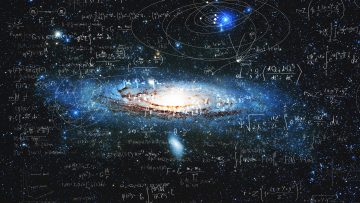Astronomers have discovered a lonely galaxy near a supermassive black hole. The galaxy is known as 3C 297 and is believed to have once been part of a galactic cluster in the area. Now, the galaxy floats in an empty region of space, alone, roughly 9.2 billion light-years from Earth.
The galaxy was recently observed using NASA’s Chandra X-ray observatory, revealing key characteristics most often seen in clusters. As noted above, astronomers believe the galaxy was once part of a cluster. However, the other galaxies are now missing.
The belief is that this lonely galaxy merged with the others, creating what we now see as 3C 297. It’s also believed that 3C 297 was the largest galaxy within the cluster and thus had the most gravitational pull out of those within it.
Astronomers call galaxies like 3C 297 fossil group. It’s also the most distant fossil group we have discovered thus far. Another clue that 3C 297 might have been part of a cluster before is the quasar active at the center of the galaxy’s center.
The jets from the quasar found within the lonely galaxy suggest that it has interacted with large stores of gas within 3C 297, which could be an indication of a cluster once existing here. Of course, looking at the image above, the galaxy doesn’t look that alone. However, astronomers say none of the galaxies visible around it are close enough for a cluster.
But there are more significant questions revolving around 3C 297 than just whether or not a cluster existed here. For instance, we’re seeing the galaxy as it was over 9 billion years ago. This means this galaxy cluster merged and became a fossil group much quicker than astronomers believed possible.
Thus, the existence of this lonely galaxy defies what we know about galaxy mergers and fossil groups as a whole. Perhaps future observations of similar regions in space could tell us more. For now, we’ll need to wait and see what future space missions like the ESA’s upcoming Juice mission teach us.








